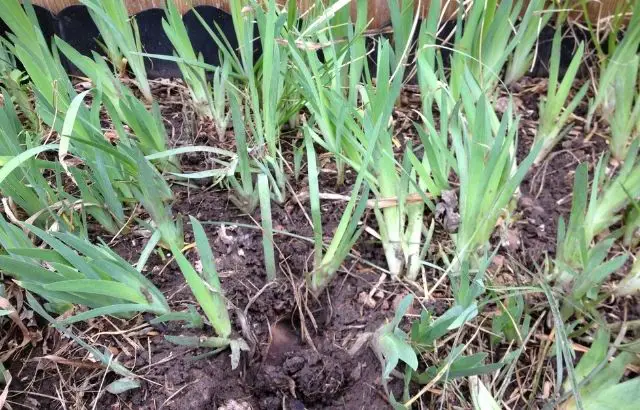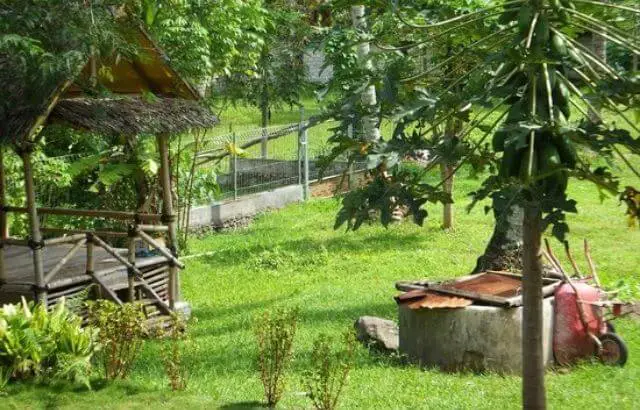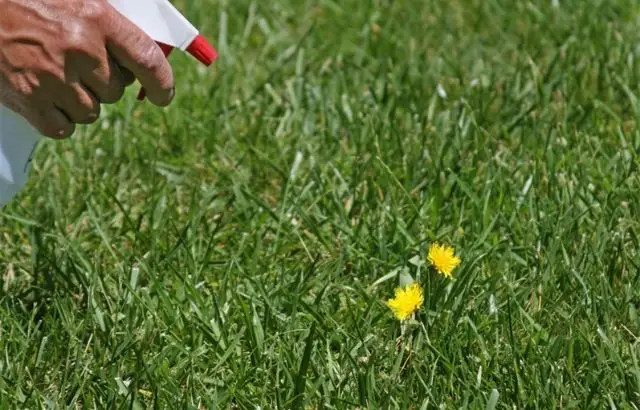It only takes a glyphosate-laced blow to the head. Expect a fight that will last at least two years, and more likely three. Nevertheless, you will ultimately prevail. It will take some time, but eventually, you will succeed. However, you should uncover the blatantly obvious ones. Dig up and remove these large clumps. With a lawnmower or weed whacker, you can eliminate it. Allow the plant to sprout and produce new green tissue. You can apply a glyphosate-containing spray to it. Okay, let’s begin applying pressure to this situation. We did cover it with black plastic during the summer, as it occurred during that time. Let’s learn how to kill monkey grass.
You likely decided to cut it up, spray it down, and cover it with black plastic because it was scalding in the middle of summer. We weakened it slightly and then dug out as much as possible. It is essential to unearth the entire root system.
How to Kill Monkey Grass
For killing monkey grass, you have to follow the below steps:
- Dig it up
- Containing the grass
- Thinning leaves and using traps
- Using Commercial Products
- Planting vines
- Boiling water
- Call for professional help
- Remove Grass by Hand
- Stifle the Spread
- Use Chemical Herbicides
- Keep Your Lawns Clump Free
Dig it up
It is the easiest way to get rid of monkey grass. But it may become time-consuming depending on how much grass you dig up. By following the down steps, you can do this procedure.
- Mow the grass to remove monkey grass crowns, making it easy to dig up.
- Dig the grass and remove all plants to prevent new growth. If you don’t remove all roots, they will grow again.
- Remove all plant roots. It would help if you dug up all clumps and surrounding soil to ensure you get as many roots as possible.
- Once you are finished, leave the ground for 2 weeks to check for regrowth. If it happens again, dig up and remove the roots as possible.
- Repeat the procedure depending on how many roots you missed.
- You can use herbicides or chemicals available in the market, which keep monkey grass from spreading.
- The other best way is to use white vinegar; white vinegar prevents the plants’ regrowth, but when you spray, it ensures it doesn’t damage any other plants surrounding it.
Containing the grass:
- This procedure can be performed by setting up barriers on the edges. It will minimize the chances of grass spreading.
- Ensure the barrier is 12-18 inches down for best results.
- Summer is the best weather to do this procedure.
- You can combine the barrier with digging to get better results.
- Similarly, you can cover the area with plastic sheets or landscape fabric; it will suffocate all rhizomes and roots.
Thinning leaves and using traps
- After digging up, you can use the thinking leaves method to restrict monkey grass growth by thinking about the leaves regularly. This method can be performed by clubbing the leaves.
- Cover the dug grass area with a tarp.
- Thinning out monkey grass helps you in:
- Removes Overlying
- Protective Foliage
- A tarp’s benefit is capturing sufficient heat to damage the regrowing grass.
Use Commercial Products
- If you use herbicides to get rid of monkey grass, you must prefer glyphosate products; they contain active elements that kill the grass.
- Be careful while spraying active ingredients inside the ground as it will monkey grass and all your desired grass you want in your garden.
- Liriope: If you have this grass, you will need 2-3 applications before getting rid of monkey grass.
- Bermudagrass Lawn: If you have this type of grass, you can spray around to control the liriope before Bermuda breaks the dormancy.
- They were mowing only and did not usually affect the plant’s growth. But after mowing, plants will grow back again.
- Warnings on commercial Products: Avoid commercially available sprays on the ground. Due to these herbicides, the grass blades will become waxy, and the spray will run into the ground.
- Killing Mondo grass is a time-consuming process.
- If you think of putting a tarp, it will avoid regrowth only for 1 season.
- Due to the rhizomes that remain dormant in the soil, the Gardner has to perform repetition for many years on the whole process to get rid of monkey grass.
Make Use of Planting Vines Method
- The other method you can do is to plant any other plant after digging the grass area.
- You can plant fast-spreading vines like red honeysuckles or jasmine.
- These plants will leave the remaining grass for sunshine and moisture.
- This way, the roots will vanish entirely in 1 or 2 seasons and then be uprooted.
Use Boiling Water
- Pouring water over grass, weeds, or unwanted plants is the least expensive way. If you want to kill monkey grass permanently, then it’s the best method.
- It takes too much time as 1st you have to wait till the water boil, then take this pot to the garden and then put it off like it doesn’t spread anywhere else.
- While pouring boiling water, dig a smaller area to quickly go inside the desired area when you put water in the garden.
Call for Professional help.
- If none of the steps work for you, call a professional to help eliminate monkey grass.
- The experts will not only help you in getting rid of grass but will also ensure that grass is killed and removed quickly.
- Other things they will provide you essential details through which you can prevent grass growth.
- This method will maintain the grass’s health without any weeds and jumpers.
- If you call a professional, all the procedures will become costly, so you must hire the right professional who works according to your requirement.
Remove Grass by Hand
Pull weeds out while still immature to prevent them from maturing and reproducing. The roots, rhizomes, and other underground plant parts, such as tubers and bulbs, must be dug up and discarded along with the weed. You can dig up thick-rooted weeds with a dandelion fork or a screwdriver with a broad blade.
Hand weeding is as old as agriculture and is the most effective weed control method. Due to a lack of water, weeds pulled by hand or hoed to the ground die. If a home were a herbicide rather than a pesticide, the active ingredient would be steel, and the mechanism of action would be a lack of water in the plant’s cells. However, some plants, such as common purslane and Bermuda grass, can survive uprooting and re-rooting in a new location.
Stifle the Spread
Perform damage control and prevent further clumping if the clumping is too extensive to eliminate immediately.
- Install root barriers with a minimum depth of 15 to 18 inches to prevent root-up spread.
- Using a tarp or landscape fabric, cover the confined space.
- This effectively suffocates your monkey grass by creating a room-like environment for it.
- A bamboo root barrier with a thick plastic sheet is the optimal solution in this instance.
Use Chemical Herbicides
The most effective method for eliminating grass and weeds is treating the entire lawn with a nonselective herbicide, such as glyphosate. Glyphosate, a translocated herbicide applied post-emergence, is highly effective against both grassy and broadleaf weeds in turf.
Rapid transport of glyphosate throughout the systems of all actively growing plants. In most cases, monkey grass will not benefit from fertilizer, but a layer of high-quality compost will be beneficial.
Keep Your Lawns Clump Free
You are likely aware that there are numerous tasks you must perform to maintain your lawn. There may be additional details you are overlooking. After the grass has been cut, preventing it from clumping together is one of the most critical tasks. This is because if these grass clumps are left on the lawn for too long, they can suffocate the grass beneath them. It can form an unsightly layer of thatch and turn your grass yellow.
Use a blower or rake to disperse these clumps from the lawn, then place them in a garbage bag and transport them to your compost bin. One of the rules is that you should never cut wet grass. Never-ever. This is because wet grass is approximately 6.319% more likely to clump than dry grass.
Additionally, you can reduce the likelihood of clumping by cutting the grass more often so it does not grow too long between cuts. Why? But, if you let your grass grow too long, your mower must remove far more than a third of the plant at each cut.
Maintaining a healthy, clump-free lawn requires regular mower maintenance, which is often overlooked. Additionally, it is easy to implement. Turn your mower on its side and use a plastic scraper or putty knife to remove debris from the underside of the deck.
7 Tips To Do This Work Fast & Clean

Preparing for the Harvest of Monkey Grass
Digging it up is the simplest way to get rid of monkey grass. This is the quickest method to implement but requires the most time. For optimal results, unearth as much of the root system as possible. To remove the clumps entirely, it is necessary to excavate their source. Additionally, you should remove the soil surrounding the grass’s roots.

Upon completion of the excavation, double-check that no survivors escaped. This procedure necessitates a degree of patience. The quantity of grass in your yard is decisive.

Utilizing Boiling Water
Spray boiling water on the monkey grass if it isn’t taking over a large portion of your lawn. Consequently, it is among the most financially viable alternatives.

On the lawn, you can eliminate unwanted grass and plants.
Closing in the monkey grass with Bamboo barriers.
You can use Bamboo barriers to control monkey grass in a particular area. This will prevent the grass from spreading into unanticipated areas. You can use wood too.

The length of the grass clippings must be between 30 and 45 centimeters. You can construct a barrier that extends deep into the grass’ root zone using heavy plastic bamboo poles.
Because the root structure of each plant varies, comparing the root systems of a pine tree and a clump of monkey grass reveals substantial differences. After root removal, you must install the barriers with care. Due to the barrier, the grass will not be dispersed to unintended areas.
Herbicides application
Numerous herbicides exist for the elimination of undesirable vegetation. Herbicides like glyphosate and clethodim are especially effective against monkey grass. This method requires the use of a brush or sponge, however.
Spraying the herbicide directly on the monkey grass is permissible, but not on the ground. It could cause severe burns if it comes into direct contact with you. In most instances, 2-4 ounces of herbicide per gallon of water is sufficient to eradicate grass.

Utilized on a sunny day, it is most effective. Repeat this procedure until all the monkey grass in your garden goes away.
Thin leaves.
Unfortunately, thinning the leaves does not eradicate monkey grass. However, it helps suppress grass growth. Simply rubbing the grass is sufficient. You can use it to remove any protective vegetation impeding your progress. By corralling the monkey grass, you can completely encompass the area. The damage will prevent the grass from growing.

Some of the plant’s foliage must be physically removed for leaf thinning. If you follow this plan, the monkey grass will not spread to new areas.
Use the Latest Planting Method
It is possible to remove and replace the grass with new plants. In other words, monkey grass is capable of regeneration. On bare soil, you can establish new plant life. There, it is preferable to plant jasmine and other fast-growing plants.

You can use root killers to kill existing tree roots before new trees are planted on top of them. Effective root killers are available in stores. In this application, copper sulfate and foaming root killers are both effective. You may utilize any of them based on your particular requirements.
Seek Professional Assistance
If you have tried all these solutions and continue to experience difficulties, it may be time to seek professional assistance. They will guarantee that the monkey grass has been eradicated. The grass will recover less effectively.
Industry professionals will answer your inquiries regarding monkey grass. You do not influence the circumstance. They will handle everything according to your instructions.
Frequently Asked Questions
Will vinegar kill monkey grass?
You can use herbicides or chemicals in the market, which keep monkey grass from spreading. The other best way is to use white vinegar; white vinegar prevents the plants’ regrowth, but when you spray, make sure it doesn’t damage any other plants surrounding it.
What is Monkey Grass Good for?
Monkey grass is an attractive plant used to border flower beds and pathways. When planting plugs of monkey grass to define or accent flowerbeds or to line walkways, space them no further than 8 inches apart. Due to its slow growth rate and clumping nature, monkey grass requires minimal upkeep.
Will bleach kill monkey grass?
The household bleach will kill the monkey grass. It will kill the grass and kill weeds and anything growing in the area around you. Spray bleach round up. It is the most expensive way and also dangerous for other growing plants. Before using, you must know using bleach in the garden is illegal.
Does white vinegar kill monkey grass?
In response to your question, vinegar does kill monkey grass. To eliminate monkey grass, it is best to use chemicals or herbicides.
What spray will kill monkey grass?
The chlorine bleach will eliminate the monkey grass. The area will be devoid of all plant life, including grass and weeds. On the other hand, white vinegar is lethal to plants because it dehydrates them severely and disrupts their cell membranes.
Is monkey grass hard to remove?
Monkey grass removal is difficult but not impossible. There is no universal technique for eliminating monkey grass. It would help if you instead experimented with various methods of monkey grass control until you find one that is effective.
Unfortunately, if not regularly mowed, monkey grass forms dense, seemingly endless clumps.
Is monkey grass invasive?
Liriope spicata, an invasive species, is responsible for the spread. You may dig to your heart’s content and then apply glyphosate to anything that grows from your missed roots (Round-up). So, remember that it will take several growing seasons to eradicate the monkey grass.
Does monkey grass come back every year?
Because it produces new leaves each spring, monkey grass recovers quickly from annual trimming. If the edges of your monkey grass appear ragged, trim it to remove the older growth and reveal a brand-new, lush green border.
Why is Liriope called monkey grass?
The genus’ scientific name, which is derived from the Greek words ophis (snake) and pogon (flower), was likely inspired by the flower’s spike (beard).
Is monkey grass poisonous to dogs?
The ground cover known as monkey grass is frequently mistaken for genuine grass. Liriope (Liriope muscari) is a synonym for border grass (Liriope muscari). Dwarf mondo grass, also called “monkey grass,” is an additional plant with comparable characteristics (Ophiopogon japonicus).
Are monkey grass and Liriope the same thing?
Monkey grass is a ground cover easily confused with natural grass. Liriope (Liriope muscari) is another name for border grass (Liriope muscari). Dwarf mondo grass, also called “monkey grass,” is a similar plant (Ophiopogon japonicus).
Do you cut back, Liriope?
Sure. The pruning of cold-damaged plants can be postponed until January or April, depending on when the threat of subzero temperatures subsides in your region.
What Types of Chemical is Suitable to Kill Monkey Grass Permanently?
Using a glyphosate-containing product, most frequently Roundup, is the quickest and most effective way to eliminate monkey grass. The business recommends Roundup Poison Ivy Plus Tough Brush Killer.
Applying a nonselective herbicide, such as glyphosate, to the entire lawn or weed patch is the most effective way to remove existing grass and weeds. Glyphosate, a post-emergence translocated herbicide, efficiently kills turf, grassy, and broadleaf weeds. Rapid translocation of glyphosate by all actively growing plants
Conclusion
To sum up, this topic, killing the monkey grass is a time-consuming process. If you want to kill it permanently, you can use different methods, as I explained above. If you follow the whole procedure, you will learn how to kill monkey grass. You can use bleach and white vinegar; dig the ground to remove all the roots from the ground.
You can put other plants’ seeds that will replace monkey grass, and after 1 or 2 seasons, it will finish by itself. If you feel these processes are difficult, I mentioned the other thing and called a professional for more assistance. Once you give your work to professionals, they will finish the job in less time, more the products they will use is more useful for the ground than your home remedies.
Read More: How Long Does It Take To Grow Tree?




